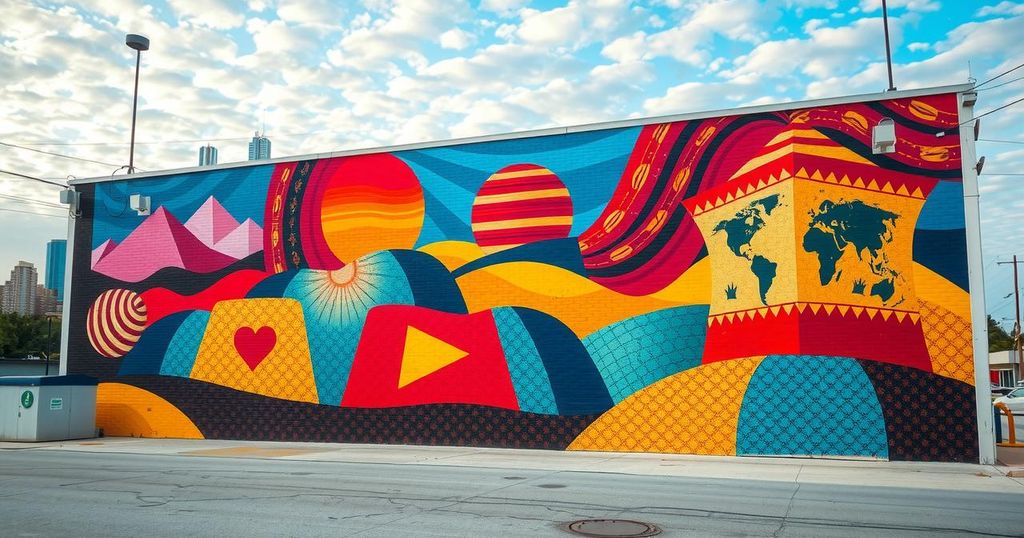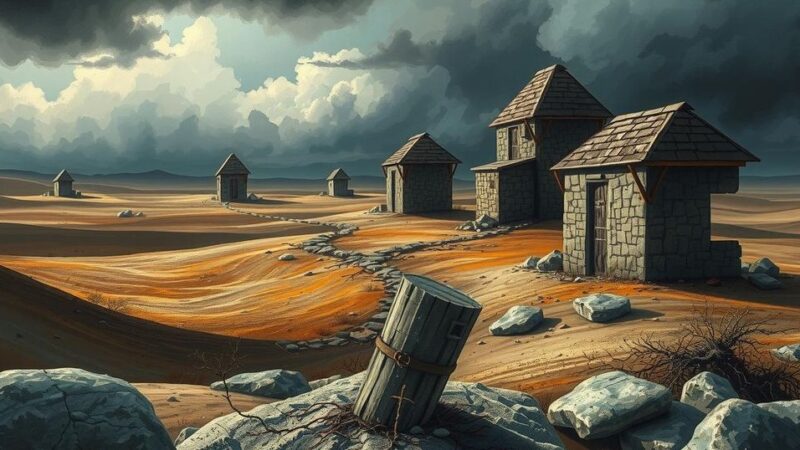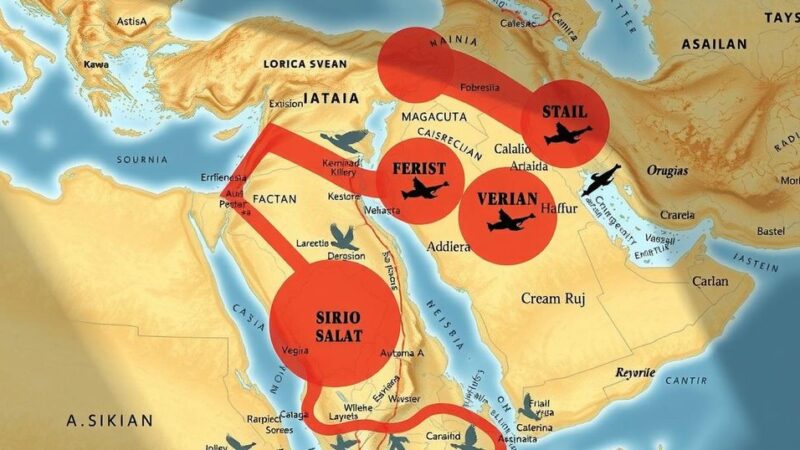The civil war in Sudan has devastated the burgeoning art scene, displacing over 12.5 million people. Artists like Rashid Diab and Yasmeen Abdullah reflect on the importance of preserving their cultural heritage. Their work continues to explore themes of identity and resilience from exile, confronting the loss and destruction experienced in their homeland.
In a poignant video call from Madrid, Rashid Diab, a renowned Sudanese painter, reflects on the devastation of Sudan’s art scene amid an ongoing civil war. Alongside his son, Yafil Mubarak, they engage in a deep dialogue about the essence of Sudanese identity and the true protector of their cultural heritage. Diab expresses concern over the forces who have wrought destruction upon their homeland, establishing the need to preserve the authentic Sudanese experience through art.
The civil strife that erupted in Sudan in April 2023 has severely hindered the flourishing art scene in Khartoum. Notably, galleries like Downtown Gallery, which from 2019 had curated and exhibited over 500 artworks, have faced extensive loss. Founder Rahiem Shadad noted a devastating loss of 60 to 80 paintings directly affecting his gallery, with a nationwide toll that he estimates is in the thousands.
More than 12.5 million individuals have been displaced due to the war, creating a burgeoning list of Sudanese artists determined to document their nation’s rich history. One such artist, Yasmeen Abdullah, fled Khartoum while pregnant and continues to create art from her current location in Oman. Abdullah states that despite her upheaval, the light of creativity has remained within her, imbuing her work with themes of resilience and nostalgia through evocative imagery inspired by local poetry.
Ala Kheir, another Sudanese artist and photographer, expresses a profound connection to his land, seeking to convey the true essence of Sudan through his lens. Forced to adapt his photography educational program, The Other Vision, to a remote operation, Kheir aims to capture the human experience amid the ongoing conflict and highlight the stories of ordinary Sudanese citizens rather than solely the war’s destruction.
Diab raises an essential question regarding the meaning of creating art labeled “African” from abroad. His artwork, known for its depictions of Sudanese daily life and rich colors, serves as an enduring memory of his ties to Khartoum. The Rashid Diab Arts Centre, a project he cherished, was among the casualties of the conflict. As the situation in Sudan continues to stagnate, the dreams of many artists like Diab and Mubarak seem increasingly distant.
Yasmin Elnour, a collage artist now residing in London, echoes a similar sentiment of loss and identity. Her work draws from historical experiences, pondering whether a cultural identity necessitates a physical location. As the future of their homeland remains uncertain, Sudanese artists in exile are committed to creating and sharing their work, serving as cultural ambassadors for their nation amidst adversity. Mubarak poignantly asserts that despite their lack of military roles, artists possess the ability to reshape perceptions of Sudan beyond its current turmoil, showcasing its rich philosophical and artistic heritage.
The ongoing civil war in Sudan has inflicted considerable damage on the country’s vibrant art scene, leading to widespread displacement of artists. Figures like Rashid Diab and Yasmeen Abdullah exemplify the poignant struggles faced by Sudanese creators who strive to preserve their cultural identity and contribute to their heritage from afar. As they adapt to the current circumstances, their dedication to art serves as a powerful testament to resilience and hope amidst chaos.
Original Source: www.artnews.com






